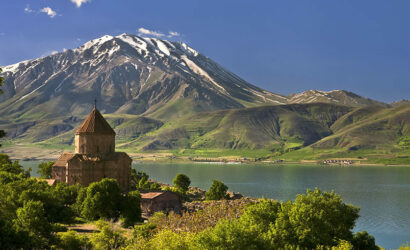Istanbul
Istanbul, the city is located on two continents: Europe and Asia, so in this city the East and West, Asian and European cultures intersect.
At different times the city was called Byzantium, Constantinople and later became Istanbul.
There are several legends about the founding of the city. According to one of them, the founder was a brave warrior and hunter Byzantium – the son of Poseidon and the nymph Keroessa, daughter of Zeus and Io. As Byzantes was performing another sacrifice, an eagle appeared and grabbed the heart of the sacrificial bull and carried it to the cape. Byzantium took this as divine predestination and founded a city there named after him.
The first Byzantine inhabitants enclosed the city with strong stone walls with watchtowers and surrounded it with deep ditches. There is even a legend that the walls of the city were built with the help of Poseidon and Apollo, and therefore they were called “divine”. The city was surrounded by fields, vineyards, orchards and pastures, with a good harvest of grain, dates, mulberries, figs, strawberries, laurel and cypress, wild boars and deer in the forests, plenty of fish, oysters and crayfish in the waters of the Bosporus and both seas, gold and copper in the vicinity.
After Constantine the Great became the sole sovereign ruler of the Roman Empire in 323, he turned his attention to the economically and strategically advantageous location of Byzantium. In 330, by the decision of Constantine the Great, Byzantium became the capital of the Roman Empire under the name New Rome, but during the emperor’s lifetime the city began to be called Constantinople – Constantinople. And by 500 AD.
Constantinople with a population of more than 450 thousand people bypassed its predecessor, Rome, in the fight for the title of the largest city in the world.
In 1453, after a long siege, Sultan Mehmet II Fatih (the Conqueror), took Constantinople. The ancient city on the shores of the Bosporus gave way to Istanbul, which became the capital of the mighty Ottoman Empire. Before that the capitals were Bursa and then Edirne.
Istanbul has a grandiose number of attractions, its history is intertwined inbizarre loops, and gathers together the influence of the Persians, Spartans, Galatians, Hellenes-Greeks, Romans and Turks-Ottomans. In its history, it has seen ups and downs, the birth of cultures and peoples. Here the Muslim monuments of architecture and art, Christian churches and Jewish synagogues peacefully coexist. Istanbul is the largest city in Turkey.
This city is so big that it does not tolerate spontaneity from visitors who come for a few days. It is better to decide in advance what you definitely want to see, explore, and taste.
Activities
Other Trips
These are other trips.



